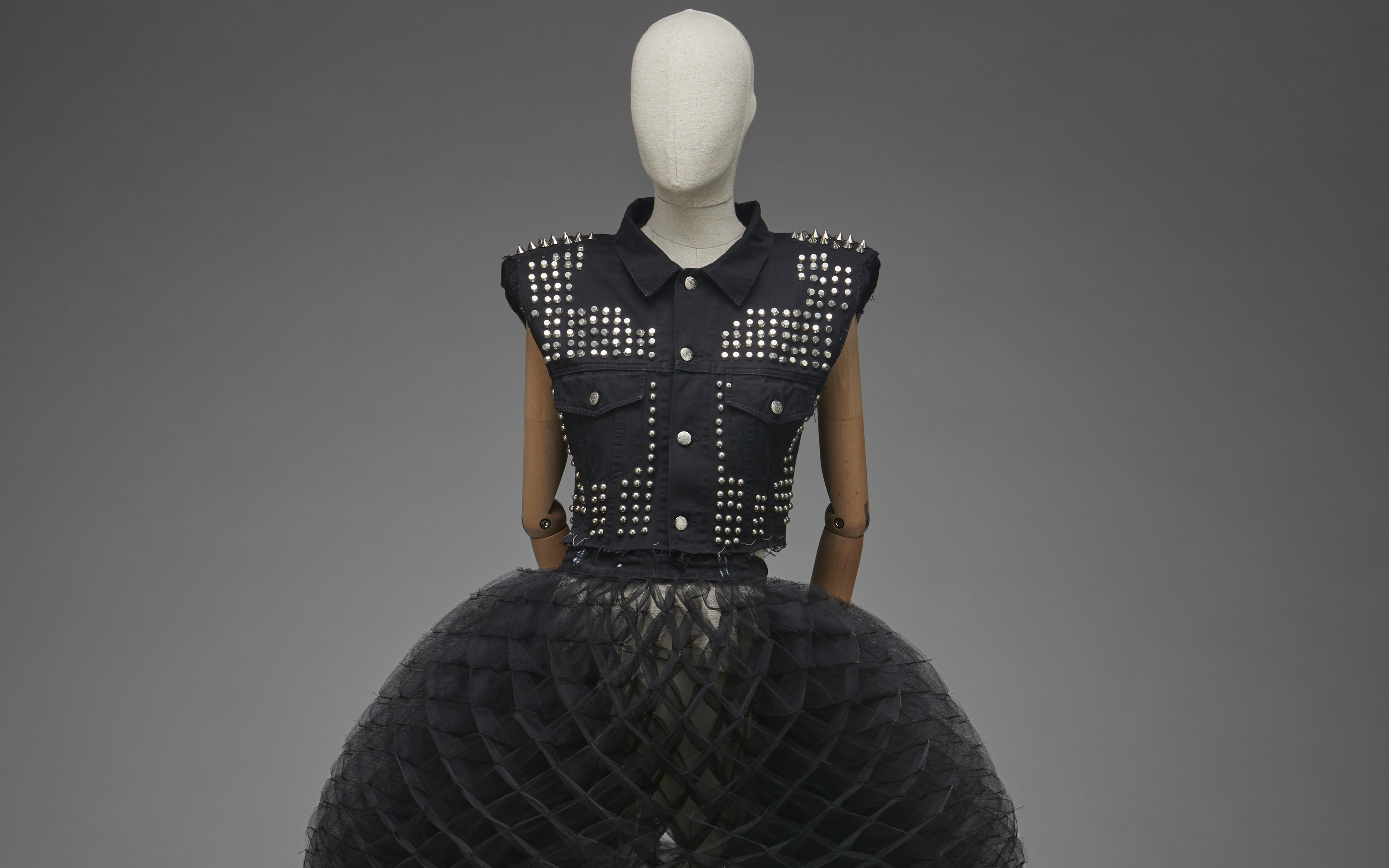 Pics: Museo del Traje CIPE.
Pics: Museo del Traje CIPE.
How many jeans do you have in your closet? Or, rather, how many garments made with denim? Surely, the mental figure would occupy double digits if we start counting the number of trousers, skirts, dresses, shirts and jackets that hang on the hangers and are made with the world-famous denim, without a doubt, the king of fabrics.
Jeans and denim clothing are some of the most universal elements in contemporary fashion. These garments transcend social class barriers around the world and, although they initially emerged as utilitarian garments for the working classes, over time they have become common items that unify all wardrobes.
From the pioneer Levi’s, founded in 1853, to today’s ready-to-wear brands and luxury houses. If we had to define the 20th century to the present day in one piece, it would surely be a pair of jeans: whether it be a model with large tears, patchwork elements and misaligned hems, or the stylish model that Kaia Gerber wore at Valentino for the show Haute Couture Fall-Winter 2023-2024. In the words of Pier Paolo Piccioli: âStrength is not in the outfits, but in the clothes.â
Aware of the universal power and conceived as a symbol of our contemporary culture, the Costume Museum wanted to pay tribute to the eternal jeans with the exhibition ‘Jeans, from the street to the Ritz‘.
Curated by Josep Casamartina i Parassols and Ismael NuÃąez MuÃąoz of the FundaciÃģ Antoni de Montpalau and coordinated by MarÃa del Mar Belver, the exhibition pays tribute to the cowboy. How? Through a journey through the history of denim fabric, from its origins as a material in the 18th century, through the birth of the jean in the mid-19th century and its enormous expansion throughout the 20th century and the beginning of the 21st, to its infinite formal and textile variations, but also symbolic and social.
The proposal includes more than 200 pieces of clothing accompanied by graphic documentation and accessories from the FundaciÃģ Antoni de Montpalau, completed with loans from the private collections of the collector Josep M. Rovira, the historical archive of the Lois brand and the collector Paco Sifre, as well as the companies JeanologÃa and Evlox. Among them, classic brands dedicated to making jeans stand out, such as Levi Strauss, Lee, Lois or Pepe Jeans, but also brands such as Cavalli, Armani, Kenzo, Paco Rabanne, Gloria Vanderbilt, Calvin Klein, Thierry Mugler, Jean Paul Gaultier, Dolce & Gabbana, Moschino, Versace, Gori de Palma or Christian Lacroix.

From Europe to the United States. The origins of denim
The origins of this fabric date back to the 17th and 18th centuries, until the mid-19th century when the garment that takes its name from the fabric itself was born. Denim is a cotton twill made with very strong and durable twisted threads. The beginnings of the industry are located between Nimes – this is where the name comes from – and Genoa, where most of the factories that produced the fabric were concentrated. Jeans as such were not âinventedâ until 1860, when Levi Strauss began using twill fabric to make work clothes. Without disconnecting from the United States, the exhibition follows the course of history and strips the cowboy of its exclusive association with the working class, explaining how it came to be a symbol of masculinity and, later, a garment of female empowerment through its outstanding diffusion in the world of cinema, music or urban movements.
The exhibition also presents a section on denim production in Europe, with an industrial network of brands dedicated to denim clothing that would soon achieve great international dissemination. In fact, Spain was one of the most prominent producers, with companies in Catalonia, Valencia, the Basque Country and Castilla la Mancha.

A constant metamorphosis
Starting in the 1970s, the fashion world adopted denim and integrated it without complexes. The industry moved forward in search of new horizons and gave rise to countless variations in the types of denim garments. It is curious that, although jeans were born to last, at the end of the 20th century a taste for worn and torn jeans arose. In the same way, it was used to recreate modern versions of historical pieces totally removed from utilitarian clothing. Pleats, draping, puffing, pleating, extravagant prints and all kinds of embroidery flooded jeans in the world of luxury. In fact, the exhibition also explains how major luxury brands adopted denim and introduced jeans into the world of glamour, generating a kaleidoscopic denim universe.
Precisely, the exhibition culminates with a âbrunch at the Ritzâ, where the aim is to emphasize how denim has become a prominent part of the social elite. With a nod to the famous quote by Yves Saint Laurent, who proclaimed âDown with the Ritz! Long live the street!â, the exhibition shows how jeans would end up taking over the Ritz in their own right thanks to their enormous versatility and their role as absolute kings of the street.

The sustainable vision
Jeans, from the street to the Ritz’ also highlights an uncomfortable issue. Beyond being the most popular and durable fabric in the world, denim also has a dark back: it is the fabric that demands the most water resources. To produce a single pair of jeans, 3,000 liters of water are needed. In one of the challenges posed for the new century, the exhibition also addresses, although cautiously, the ecological implications of the manufacturing process and the search for sustainable alternatives for its production.
‘Jeans, from the street to the Ritz’ will be open to the public until the 17th March, 2024.

